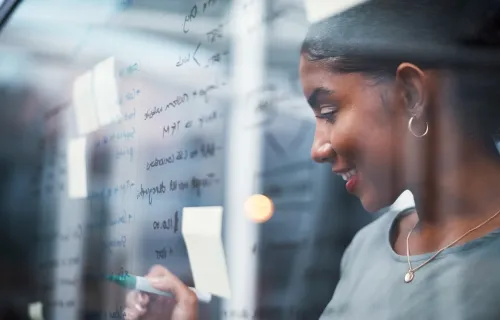We use our own and third-party cookies to provide a smooth and secure website. Some are necessary for our website to function and are set by default. Others are optional and are only set with your consent to enhance your browsing experience. You may accept all, none, or some of these optional cookies.
Let’s take a moment to appreciate the complex journey of the items we use every day. Ever wondered about that sweater you love? Its threads are likely sourced from India, buttons from China, and it’s sewn in Italy. Your trusted electric car? Its parts come from different countries, it’s assembled across an ocean, shipped on a car carrier, and powered by your local green energy provider. What about the medication you rely on? A complex network of R&D, manufacturing, distribution, regulation and so much more took effect before you picked it up at your local pharmacy.
Behind every item lies a complex, interconnected global supply chain ecosystem that must work in perfect harmony to ensure that the products and services we rely on are always within reach.
Increasing complexity threatens resilience
But this is no easy task. Every day, around the world, governments and commercial industry organizations work tirelessly to keep global supply chain ecosystems working smoothly. These highly complex and intricate networks, interwoven across industries and geographies, must function seamlessly and adapt to disruptions to ensure the economic health and resilience of citizens, countries and businesses.
The increasing complexity and interdependence of global supply chains make organizations' supply chains vulnerable to disruptions such as natural disasters, economic fluctuations, geopolitical changes, and unexpected events. This is underscored by the findings coming from CGI’s Voice of Our Clients research. Across 1,829 conversations with business and IT executives, 33% cite that the reconfiguration of supply chains is having a high impact on their organization and, ultimately, the expected outcomes.
Given the increasing interconnectedness, it is, therefore, not enough to build a robust, adaptable, and agile supply for your own organization; you must also understand your organization’s crucial role in broader supply chain ecosystems, particularly in what we call the citizen supply chain ecosystem.
Introducing the concept of the citizen supply chain ecosystem
For those of us fortunate enough, we wake up each day and take an expected set of actions. We flip a switch, and the lights come on. We turn on the faucet, and water flows. We open the fridge, and there’s food waiting. These simple acts are so ingrained that we rarely think about them. But behind each lies a complex production, distribution, and collaboration network — a citizen supply chain.
We define citizen supply chain ecosystems as sprawling, interconnected webs spanning multiple industries, as well as local and national governments. They comprise complex networks of critical infrastructure (both physical and non-physical), stakeholders, and processes for procuring, storing, transporting and distributing essential goods and services to citizens.
Citizen supply chain ecosystems are the lifeblood of societies, ensuring the continuous flow of essential goods and services to citizens, such as emergency preparedness and response and accessible healthcare. They are also essential to meeting citizens' widening expectations, including improving quality of life and reducing inequalities.
Before the pandemic, in our hyper-connected, borderless world, we rarely paused to consider what would happen if borders closed and global supply chains suddenly ground to a halt. But suddenly, the unthinkable became our reality. The world held its breath as disruptions rippled through economies, affecting the availability of everything from toilet paper to high-tech gadgets and appliances.
What we learned is that every country, and even every town, must be prepared to uphold citizen supply chain ecosystems to ensure the well-being of citizens.
Implementing proactive resilience strategies
A hyper-focus on supply chain resilience is necessary for organizations to adapt and respond to customer needs, mitigate risks, protect businesses, and adapt to market dynamics in disruptive environments. Resilience in citizen supply chains helps safeguard citizen well-being and build stable and robust economies.
So, what can companies do?
- First, actively evaluate your supply chain. Map it, understand its intricacies, and identify vulnerabilities.
- Second, recognize and understand your supply chain’s interconnectedness.
- Further, digitize and modernize your systems and build agility to allow seamless shifts should problems occur. A key aspect is using data and AI to enable real-time visibility, predictive analytics and smarter decisions to anticipate and navigate disruptions.
- Another key element is to diversify suppliers to prevent bottlenecks in case of unforeseen events. Your suppliers have suppliers, and your customers have customers. When one link falters, others come under strain.
Regarding the point on diversification, this is where suppliers and partners in close proximity become essential to upholding local citizen supply chain services. Such collaborations are underpinned by a deep understanding of your market, including the unique cultural, economic, and regulatory contexts.
Ultimately, resilience in society is much more than just protecting and preserving critical infrastructure and services that support the daily functioning of a healthy society. It is about the capacity to endure, adapt and prosper in the face of uncertainty and disruption. By working together, we can leverage resources, share knowledge and implement innovative solutions to embrace our collective responsibility.
Contact me to discuss this topic and how we can work together to achieve resilient outcomes.









